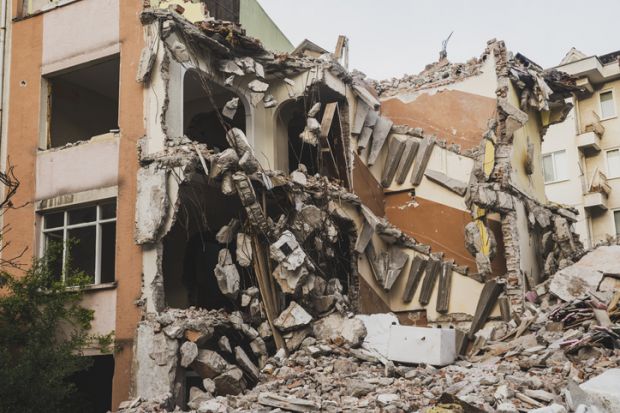The recent earthquake in Turkey and Syria, which killed more than 50,000 people, is far from the first to cause enormous destruction of life and assets, particularly in developing nations. Nor is it the first to provoke huge public interest about what causes such events.
As an earthquake scientist based in Brunei Darussalam, I am constantly asked in the aftermath of every big quake why we cannot predict them. And my answers lead to more rather basic questions about geological faults and plate tectonics – not only from the general public but also from students and even academic colleagues.
This raises crucial questions about the role of higher education institutes in disseminating information on natural hazards.
Billions of people live in South and South-east Asia, and millions are expected to face the direct consequences of climatic and geological disasters in the coming years. Science communication with people at all levels could help communities to minimise future events’ destructive phase and stop threats from turning disastrous. But my experience in these regions suggests that developing a scientifically aware community locally comes a distant third on local universities’ priority lists, behind research and teaching.
Of course, some individual academics still try to make a difference. I am from Kashmir, one of the most seismically unstable places on earth, and I have been writing about earthquake hazards for more than 13 years in local newspapers, as well as doing relevant research. Many colleagues have done the same. But nothing has changed on the ground.
Many people in Kashmir remain ignorant of the risks, and buildings still collapse like houses of cards during even relatively modest earthquakes, which can happen anytime. Seismic building regulations exist, but it is not the culture in Kashmir to follow them even when the builders can easily afford the relatively modest additional costs involved. Nor are there any penalties for failing to do so. Even my own family ignores the regulations. And it is a similar story in several other countries in the region that I have visited.
Higher educational bodies should do more institutionally and pan-institutionally to address geological hazards through community development programmes. But the best way to coordinate such efforts, and to maximise their impact, would be through a body of international significance. The United Nations is the obvious choice.
It has worked with climate change. The UN’s Intergovernmental Panel on Climate Change (IPCC) in 1992 led to the creation of the UN Framework Convention on Climate Change in 1994. Manifested in the Kyoto Protocol (1997), the Paris Agreement (2015) and the Glasgow Pact (2021), the convention now has 198 signatories, all pledged to prevent climate disasters worldwide.
Before 1992, the science of global warming existed and some people had heard about the phenomenon, but it became a popular cause only when the UN started to take it up, organising annual events such as the Conference of Parties (COP), where representatives of nations and NGOs could discuss the issue and plan how to move ahead.
Such UN-brokered conferences are the only place where the Global North and the Global South meet, presenting a rare opportunity to engage with the world community to discuss issues that matter. It is the community culture of the UN that makes the difference, and climate change is now discussed everywhere.
You can argue that it is still not enough. The parties are not bound to follow the decisions of the conferences, as they are non-binding; this allowed the US, under the presidency of Donald Trump, to become the first nation in the world to withdraw from (and, since, rejoin) the Paris Agreement formally. And emissions continue to rise. But this consensual approach is the only possible way to proceed. And while knowledge might not be sufficient to prompt action, it is certainly necessary.
Higher educational institutes should directly engage with the UN General Assembly to create a framework convention on science outreach regarding natural perils. The framework would build a community culture around a forum where global educational and administrative leaders could meet and discuss how to make the world safer by engaging with people.
Like the COP conferences, it would proceed democratically and its agreements would be non-binding. But it would give outreach greater impact, preventing hazards from becoming disasters, both by motivating scientists to do more of it and by encouraging governments, municipal bodies and citizens to listen and respond accordingly, through conferences, workshops, resource-sharing, field visits and so on.
Climate change will only increase the risks of natural disasters, from floods to fires to famines. And as populations increase, the number of people affected by earthquakes will only increase. Universities and academics have a lot of information about such threats and how their risks can be minimised. We must do everything we can to ensure that the people likely to be most affected by them have that information, too.
Afroz Shah is a senior assistant professor of structural geology at Universiti Brunei Darussalam.
Register to continue
Why register?
- Registration is free and only takes a moment
- Once registered, you can read 3 articles a month
- Sign up for our newsletter
Subscribe
Or subscribe for unlimited access to:
- Unlimited access to news, views, insights & reviews
- Digital editions
- Digital access to THE’s university and college rankings analysis
Already registered or a current subscriber? Login









